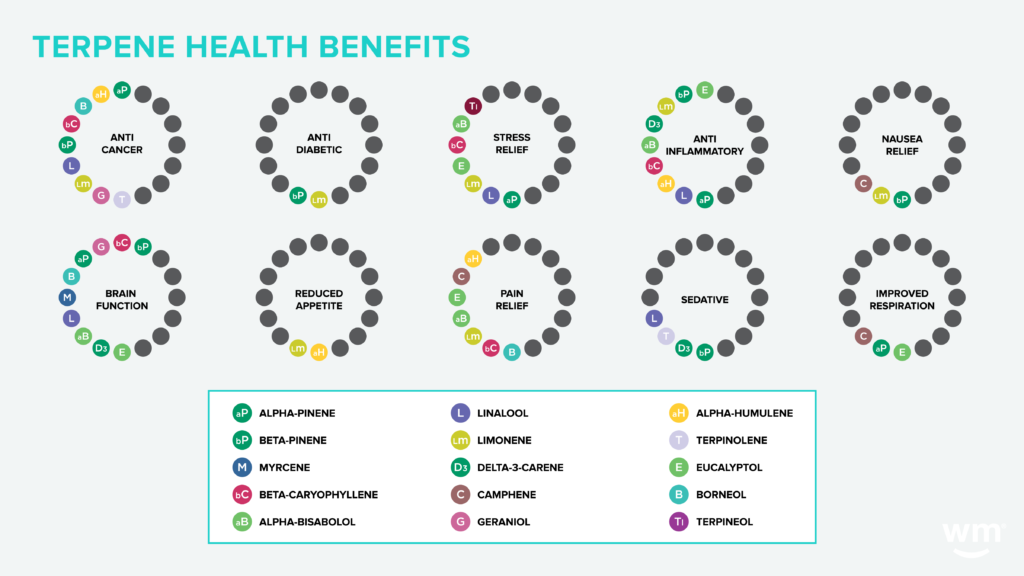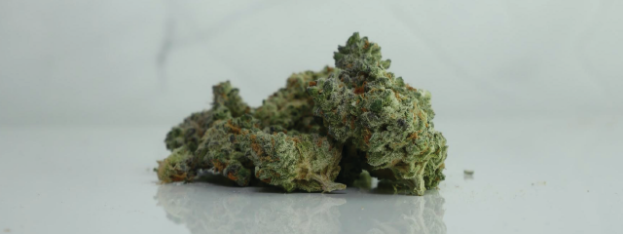Which Are The Four Most Common Terpenes Found in Cannabis?
Slowly but surely, terpenes are becoming all the rage in today’s legal cannabis industry. With their medicinal and therapeutic potential documented in scientific literature and incredible versatility as a component in infused food, beverages, cosmetics and even vape juice, it’s easy to see how terpenes are the breakout star of cannabis research.
Perhaps the most notable aspect of cannabis terpenes is their ability to produce an entourage effect mechanism which, according to True Blue, is a process whereby terpenes synergize with cannabinoids to essentially amplify each other’s positive effects on the human nervous system. This includes the amelioration of insomnia, relief from chronic pain and the alleviation of symptoms of mood as well as anxiety disorders.
Because of their distinctive aromas, flavors and beneficial properties, the large majority of the cannabis-savvy crowd is prone to picking practical favorites like caryophyllene and borneol. But which of these terpenes are found in the highest number of cannabis strains? In this post, we take a quick look at the top four most common terpenes in cannabis, in no particular order.
Myrcene
Myrcene can best be described as musky and earthy; great for infusion into cooked food such as a stew or Beef Wellington. Myrcene is famous for its quasi-sedative effects, along with its analgesic and antioxidant properties. Individuals having a hard time sleeping due to sport injuries, restless leg syndrome, or even back pain from a cubicle job would benefit from exploring cannabis strains containing high levels of Myrcene.
Examples: Grape Ape, Tangie, Blue Dream and OG Kush
Pinene
Pinene produces the aroma of its namesake, pine trees, cones and needles. Because of its pleasant smell and flavor, it’s a good pick for infusing into a wide variety of dips and dressing. Pinene is great for a cold or cough, due to its mucolytic, broncholytic and expectorant properties. It also doubles as an effective topical antiseptic for minor injuries like scratches, rashes and burns.
Examples: Dutch Treat, ChemDawg, Bubba Kush and LA Confidential
Linalool
Particularly noted as the “chillax” terpene, linalool is known for its flowery, herbaceous scent and taste. Linalool is the primary terpene constituent in lavender, producing not only a sedative effect, but also muscle relaxant and spasmolytic benefits. Currently, medical researchers are studying its viability in conjunction with CBD for calming seizures and spasticity associated with disorders like Dravets syndrome. Recovering powerlifters can also benefit from linalool, as it eases the onsets of muscle spasms and delayed onset muscle soreness (DOMS).
Examples: Pink Kush, Amnesia Haze, Lavender and Mint Chocolate Chip
Limonene
Limonene’s zesty, citrusy flavor and aroma profile has made it one of the easily most recognizable and in-demand terpenes on the market. Whether it’s the food and beverage, beauty or cannabis industry, limonene is perhaps the single most well-known terpenes today. Of course, it’s also much more than a sweet scent or piquant flavor; limonene’s anxiolytic and anti-inflammatory properties make it extremely popular with everyone from professional athletes to college students.
Examples: Banana OG, Berry White, Do Si Dos and Purple Hindu Kush







